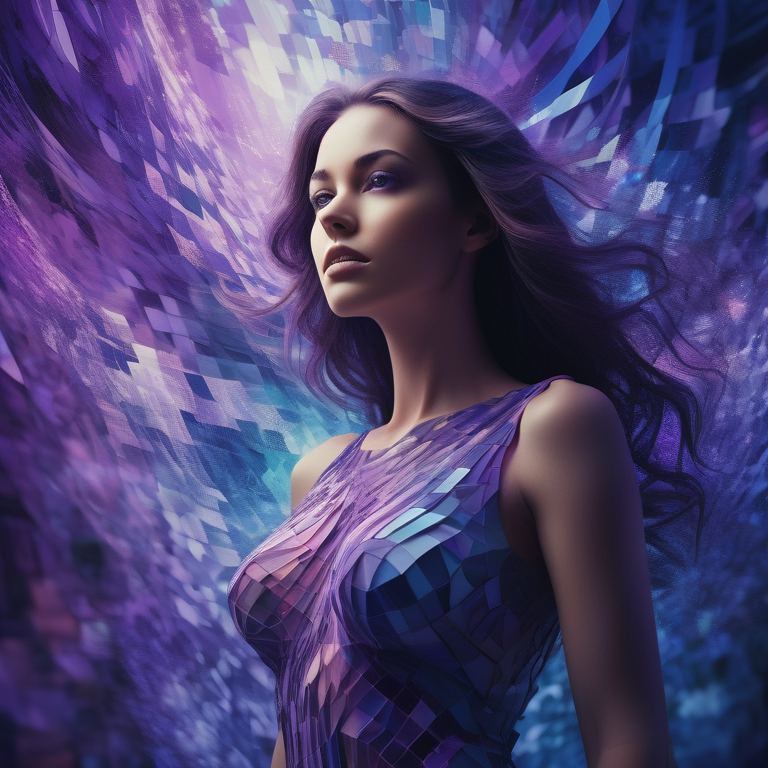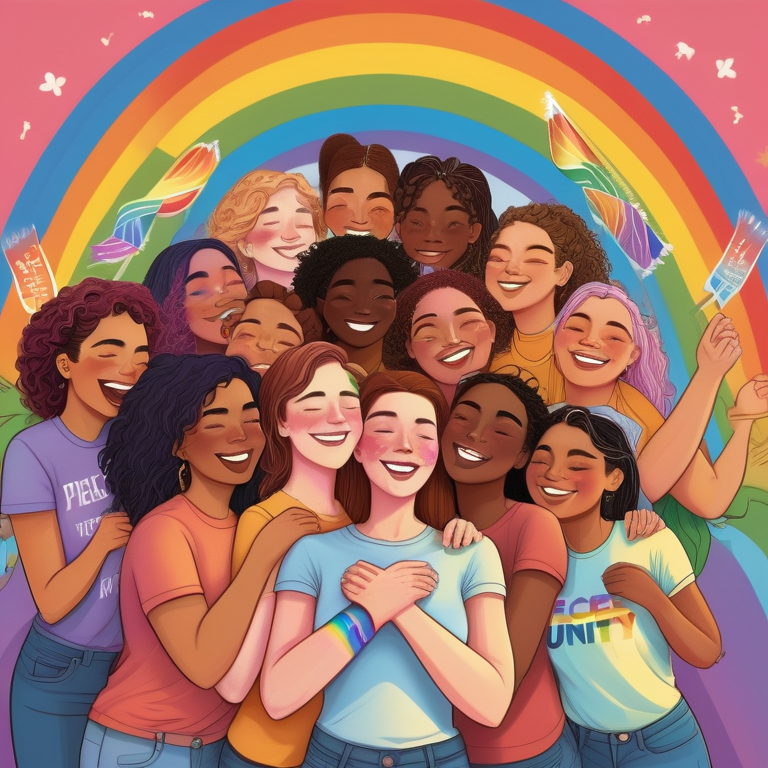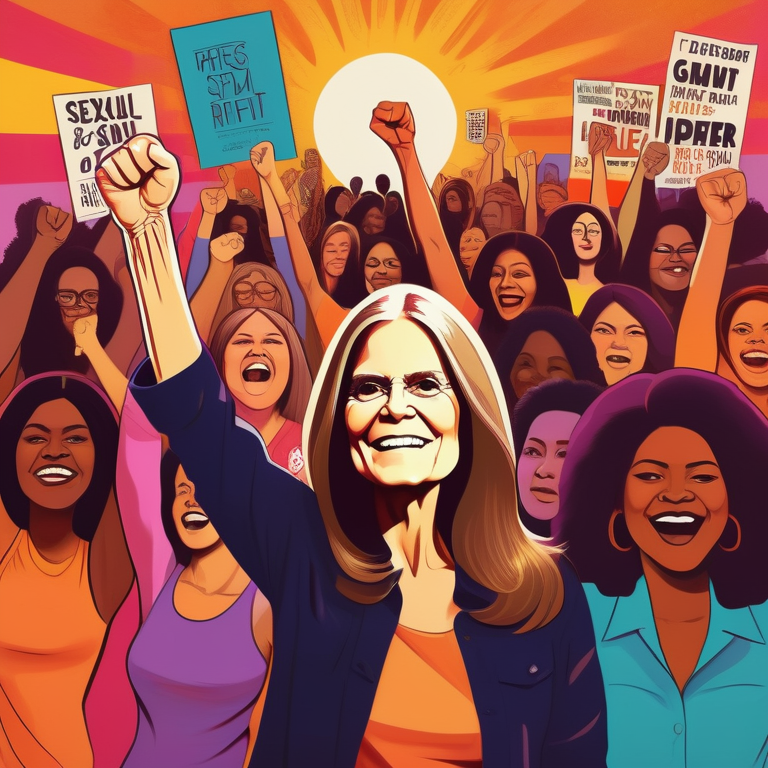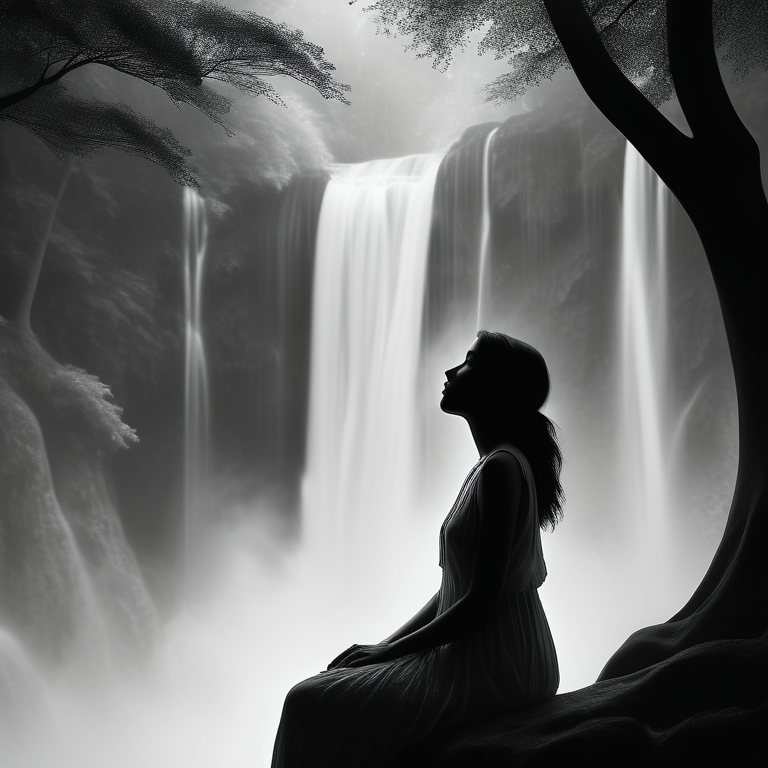The Intersection of Digital Art and Female Sexuality

Key Highlights
- Digital art has reshaped the portrayal of women, challenging traditional gender roles and giving artists the freedom to explore female sexuality.
- Female digital artists have made significant contributions to the art world influencing societal perceptions and breaking barriers.
- Technology has played a crucial role in amplifying the voices of female artists, providing platforms for expression and democratizing the art industry.
- Women in digital art face challenges such as gender bias and inequality, but they are also breaking stereotypes and empowering themselves through their work.
- Digital art has become a medium for exploring and expressing female sexuality, sparking conversations about desire, empowerment, and liberation.
- The future of female sexuality in digital art holds exciting possibilities, with predictions of evolving representations and the ongoing evolution of feminist art.
Introduction
The world of art has always been a reflection of society, capturing the essence of the human experience and exploring various aspects of identity, culture, and sexuality. In recent years, the intersection of digital art and female sexuality has emerged as a powerful and influential force. Digital platforms have reshaped the portrayal of women, providing artists with new avenues for artistic expression and challenging traditional gender roles. Female artists have made significant contributions to the art world, influencing societal perceptions and breaking barriers. Technology has played a vital role in amplifying the voices of female artists, providing platforms for expression and democratizing the art industry. However, women in digital art also face challenges such as gender bias and inequality. Despite these challenges, digital art has become a medium for exploring and expressing female sexuality, sparking conversations about desire, empowerment, and liberation. As we look towards the future, the representation of female sexuality in digital art continues to evolve, with predictions of new trends and the ongoing evolution of feminist art.
The Evolution of Female Representation in Digital Art
The evolution of female representation in digital art has been a significant development in the art world. Digital platforms have provided artists with new opportunities to challenge traditional gender roles and reshape the portrayal of women. Social media, in particular, has played a crucial role in this shift, allowing artists to share their work with a global audience and connect with other like-minded individuals. The transition from traditional to digital art forms has also contributed to this evolution, with artists embracing new mediums and techniques to explore female sexuality in groundbreaking ways.
How digital platforms have reshaped the portrayal of women
Digital platforms have revolutionized the way women are portrayed in art. Social media, in particular, has given female artists a voice and a platform to showcase their work. Through platforms like Instagram, artists can share their artwork with a global audience, breaking down geographical boundaries and reaching people who may not have had access to traditional art spaces. This has allowed for a more diverse representation of women, challenging traditional beauty standards and celebrating the diversity of female sexuality. Additionally, social media has provided a space for dialogue and conversation around female sexuality, allowing artists and viewers to engage in meaningful discussions about desire, empowerment, and the female experience.
The transition from traditional to digital art forms
The transition from traditional to digital art forms has had a profound impact on the representation of female sexuality. Digital art allows artists to experiment with new mediums and techniques, pushing the boundaries of artistic practice. Women artists, in particular, have embraced this transition, using digital tools to explore themes of desire, empowerment, and self-expression. This shift has also been influenced by the vibrant art scene in cities like New York, where artists have found a supportive and innovative community that encourages the exploration of new artistic possibilities. The accessibility and flexibility of digital art have opened up new avenues for female artists, allowing them to express their unique perspectives on female sexuality in bold and thought-provoking ways.
Key Female Digital Artists and Their Influence
Female digital artists have played a crucial role in shaping the representation of women in the art world. Their innovative work and unique perspectives have challenged societal norms and inspired a new generation of artists. Prominent figures such as Romily Alice and Helen Beard have made significant contributions to the art world, sparking conversations about female sexuality and the female experience. Their artwork has been celebrated for its boldness, vibrancy, and thought-provoking nature. Through their work, these artists have influenced societal perceptions and broken barriers, paving the way for a more inclusive and diverse art community.
Highlighting prominent figures and their contributions
|
Artist Name |
Contribution |
|
Romily Alice |
Romily Alice’s neon series, “Always Turned On,” challenges female identity in the ‘post-internet age.’ Her figurative neon works and installation pieces explore issues around gender, power, and feminism’s place in the digital era. Her choice of medium, neon, adds vibrancy to her work and underlines her aim to create art that questions how we look at and are looked at. |
|
Helen Beard |
Helen Beard is known for her celebration of female sexuality and desire in vibrant colors. Her work shatters the male perspective and stigma surrounding female sexuality, presenting the female form in an abstract aesthetic. Through close-ups of erotic images, Beard creates bold and beautiful imagery that radiates visual pleasure. She is also a curator, co-curating exhibitions that protest against censorship and explore feminist, anti-racist, and queer content. |
Analyzing the impact of their work on societal perceptions
The work of female digital artists like Romily Alice and Helen Beard has had a significant impact on societal perceptions of the female body and female sexuality. Through their artwork, they challenge traditional beauty standards and highlight the complexity and diversity of the female experience. Their bold and vibrant representations of the female body celebrate desire, pleasure, and empowerment, encouraging viewers to question societal norms and embrace their own unique expressions of sexuality. Additionally, their use of social media as a platform for showcasing their work has allowed for a broader audience and sparked important conversations around female sexuality, body positivity, and the representation of women in art.
The Role of Technology in Amplifying Voices
Technology has played a crucial role in amplifying the voices of female artists in the digital art world. Social media platforms and digital galleries have provided artists with new avenues for expression and have expanded their reach to a global audience. Through platforms like Instagram and Twitter, artists can share their work, connect with fellow artists and art enthusiasts, and engage in meaningful conversations about their artistic practice. This has democratized the art industry, allowing artists to bypass traditional gatekeepers and establish their own platforms for showcasing their work. The accessibility and immediacy of technology have empowered female artists to share their unique perspectives and challenge societal norms.
Social media and digital galleries as platforms for expression
Social media platforms and digital galleries have become powerful platforms for female artists to express their creativity and share their artistic research. Artists can showcase their work, connect with other artists and art enthusiasts, and gain exposure to a global audience. Platforms like Instagram and Tumblr have become virtual galleries, allowing artists to curate their own online exhibitions and engage with a diverse community of viewers. This has revolutionized the way artists conduct artistic research, as they can explore different styles, techniques, and influences from artists all over the world. The interactive nature of social media also enables artists to receive feedback and engage in conversations about their work, fostering a supportive and collaborative artistic community.
The democratization of art through technology
Technology has played a pivotal role in the democratization of art, empowering artists and democratizing access to artwork. Social media platforms have provided artists with a direct line of communication with their audience, bypassing traditional gatekeepers like galleries and museums. Artists can share their artwork instantly, without the need for intermediaries, and receive immediate feedback from viewers. This has allowed for a more inclusive and diverse art community, with artists from all backgrounds having the opportunity to showcase their work and gain recognition. The accessibility of digital platforms has also made art more accessible to a wider audience, breaking down geographical barriers and fostering a global appreciation for art.
Addressing the Challenges Faced by Women in Digital Art
Women in digital art face unique challenges and barriers that hinder their creative expression and professional growth. Gender bias and inequality persist in the digital realm, with women artists often facing discrimination and limited opportunities. However, female artists are actively challenging these barriers and breaking stereotypes through their work. They are using their art to empower themselves and advocate for gender equality in the art world. By addressing these challenges and advocating for change, women in digital art are inspiring the next generation of artists and fostering a more inclusive and diverse artistic community.
Gender bias and inequality in the digital realm
Despite the advancements made in digital art, gender bias and inequality still persist in the digital realm. Women artists often face discrimination and limited opportunities compared to their male counterparts. This gender bias can manifest in various ways, from unequal representation in exhibitions and galleries to lower prices for artwork created by women. Additionally, the portrayal of female sexuality in digital art can be subject to double standards and objectification. However, female artists are actively challenging these biases through their work, using their artistic practice to celebrate female sexuality, break stereotypes, and advocate for gender equality in the art world.
Overcoming stereotypes and breaking barriers
Women in digital art are breaking stereotypes and pushing boundaries through their work. They are using their art to challenge traditional notions of femininity and the female body, celebrating diversity and empowering women to embrace their unique identities. By showcasing a wide range of representations of the female body, female artists are challenging societal norms and providing a platform for self-expression and empowerment. Through their art, they are breaking barriers and creating a more inclusive and diverse art community that celebrates and respects the experiences and voices of women.
Digital Art as a Medium for Exploring Female Sexuality
Digital art has emerged as a powerful medium for exploring and expressing female sexuality. Artists are using digital tools and techniques to challenge societal norms, question traditional representations of women, and spark conversations about desire, empowerment, and liberation. The digital medium offers artists the freedom to experiment with different styles, techniques, and themes, enabling them to delve into the complexities of female sexuality. By exploring female desire through their artwork, digital artists are rejecting the male gaze and reclaiming the representation of female sexuality for themselves.
Artistic freedom and the representation of female desire
Digital art provides artists with artistic freedom to explore and represent female desire in a way that challenges societal expectations. Artists can delve into the complexities of female sexuality, celebrating desire, pleasure, and agency. By embracing their own unique perspectives and experiences, artists can create artwork that defies traditional stereotypes and reclaims the representation of female desire. Through their work, they strive to create a more inclusive and empowering narrative around female sexuality and challenge the objectification and commodification of women’s bodies.
The controversy and acceptance surrounding sexual themes
The exploration of sexual themes in digital art has sparked both controversy and acceptance. Nudity and the representation of the naked female body have been subjects of debate, with some applauding the openness and celebration of female sexuality while others criticize it as explicit or inappropriate. However, the acceptance and recognition of the artistic value of these themes have grown over time. Artists are using digital art as a means to challenge societal norms, provoke discussions, and promote a more inclusive and nuanced understanding of female sexuality. Through their work, they aim to break down taboos and encourage conversations about desire, pleasure, and the female experience.
The Future of Female Sexuality in Digital Art
As digital art continues to evolve, the representation of female sexuality is expected to undergo further transformation. Artists are exploring new techniques, mediums, and themes to challenge traditional norms and expand the boundaries of artistic expression. Predictions for the future include evolving representations of women that break free from traditional stereotypes and embrace the diversity of female desire. Additionally, feminist digital art is expected to continue to flourish, providing a platform for artists to express their perspectives on gender, sexuality, and empowerment. As technology advances and societal attitudes evolve, the future of female sexuality in digital art holds exciting possibilities.
Predictions and upcoming trends in the representation of women
The representation of women in digital art is expected to continue evolving, with upcoming trends embracing new perspectives and challenging traditional norms. Artists in cities like London are pushing the boundaries of artistic practice, exploring themes of female sexuality in innovative ways. The use of technology and digital tools will enable artists to create immersive and interactive experiences that engage the viewer on a deeper level. Additionally, the celebration of diversity and inclusivity will be at the forefront, ensuring that the representation of women in digital art reflects the richness and complexity of female sexuality.
The ongoing evolution of feminist digital art
Feminist digital art is poised to continue its evolution, challenging stereotypes and advocating for gender equality. Artists will continue to explore the complexities of the female body and the female experience, using digital tools and techniques to push the boundaries of artistic practice. Themes such as consent, body positivity, and empowerment will be at the forefront of feminist digital art, sparking conversations and inspiring change. Artists will also continue to break down barriers and make space for underrepresented voices, ensuring that the art world is more inclusive and diverse. The ongoing evolution of feminist digital art promises to redefine the way we perceive and understand female sexuality.
Conclusion
Digital art has revolutionized the portrayal of female sexuality, providing a platform for expression and empowerment. Female digital artists have challenged stereotypes and societal norms, amplifying voices through technology. Despite challenges like gender bias, their work continues to shape perceptions and drive conversations on artistic freedom and desire. As we navigate the future of female sexuality in digital art, trends suggest a continued evolution towards empowerment and liberation. Join the discussion by sharing your thoughts below. Let’s continue to explore the intersection of digital art and female sexuality together.
Frequently Asked Questions
How has digital art changed the perception of female sexuality?
Digital art has played a significant role in changing the perception of female sexuality. Through digital platforms and social media, artists have been able to challenge traditional stereotypes, celebrate diversity, and spark important conversations about desire, empowerment, and the female experience.
Can digital platforms offer a safer space for exploring female sexuality in art?
Yes, digital platforms can offer a safer space for exploring female sexuality in art. The anonymity and accessibility provided by digital platforms allow artists to express themselves freely without fear of judgment or discrimination. This creates a supportive environment for artists to explore and celebrate the diverse facets of female sexuality.
What role does digital art play in expressing female sexuality?
Digital art plays a crucial role in expressing female sexuality by providing artists with new tools and mediums to challenge societal norms and celebrate desire. Through digital art, artists can convey their unique perspectives on female sexuality, sparking conversations and empowering women to embrace their sexuality.
How has the digital medium influenced the representation of female sexuality in art?
The digital medium has had a profound influence on the representation of female sexuality in art. It has allowed artists to explore new techniques and styles, challenge traditional norms, and celebrate the diversity of female desire. The digital medium has expanded the boundaries of artistic expression, providing artists with new avenues for exploring and redefining the representation of female sexuality.
Are there any notable artists who specialize in portraying female sexuality through digital art?
Yes, there are several notable artists who specialize in portraying female sexuality through digital art. Artists like Romily Alice and Helen Beard have made significant contributions to the field, challenging societal norms and sparking important conversations about female desire, empowerment, and the female experience.
Can digital art be a platform for discussions around empowerment and liberation of female sexuality?
Yes, digital art can be a powerful platform for discussions around the empowerment and liberation of female sexuality. Through their artwork, artists can challenge traditional norms, break down barriers, and inspire conversations about desire, pleasure, and the female experience. Digital art provides an inclusive and accessible space for these discussions to take place.





